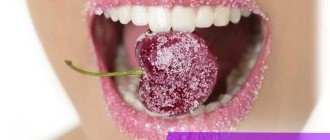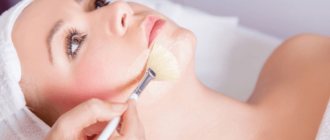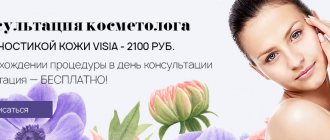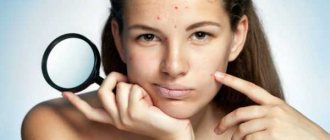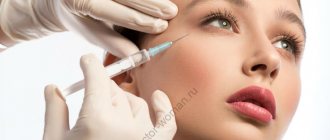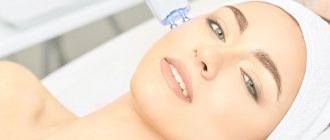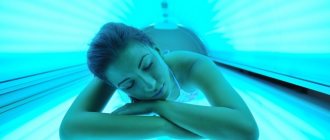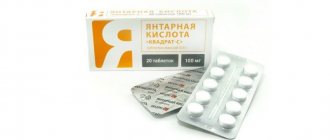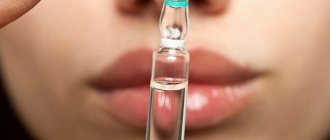06/13/2013 / Peeling
Lactobionic peeling is a new generation of chemical peels. It has a complex effect on the skin and is suitable for patients of different age groups. Due to its minimal irritating effect, it is successfully used even on sensitive, acne-prone skin.
Lactobionic acid or 4-O-β-galactopyranosyl-D-gluconic acid is a polyhydroxy acid. Formed due to the oxidation of milk sugar (lactose disaccharide), it consists of gluconic acid and galactose connected by an ester bond. Lactobionic acid began to be used in cosmetology quite recently. Previously, it was used in medicine only as a stabilizer during transplantation of donor organs and the preparation of antibacterial drugs for intravenous use. Due to its unique ability to synthesize chelate compounds with metals of variable valence, including iron, lactobionic acid has no equal in its stabilizing properties.
Indications for the use of peeling with lactobionic acid
1. skin aging; 2. premature aging; 3. presence of hyperpigmentation; 4. decreased elasticity; 5. skin tendency to inflammatory reactions; 6. wrinkles: both facial and age-related, deep; 7. drooping corners of the mouth, blurry oval of the face; 8. presence of scars and ingrown hairs; 9. photoaging.
Polyhydroxy acids are characterized by gradual penetration into the layers of the skin, so their use in peeling procedures does not cause severe burning and irritation of the skin.
Lactobionic peeling can be safely combined with other cosmetic procedures - laser facial resurfacing and microdermabrasion, which helps achieve a more noticeable cosmetic effect. This sets it apart from other peelings.
Opinion of cosmetologists
Doctors rarely use lactobione peeling in their work. Cosmetologists often perform more “dangerous” options. The procedure is recommended and the results achieved are positively assessed.
The cosmetologist speaks positively about the option.
The cosmetologist calls the procedure a good superficial treatment option.
The cosmetologist likes the option.
Contraindications for peeling with lactobionic acid:
- skin diseases in the acute phase of inflammation; - pregnancy at any stage, breastfeeding; - increased body temperature; - epilepsy, mental disorders; - childhood; — allergic reactions to peeling components; - herpes in the active phase; - the presence of pustules on the skin with the active release of purulent-necrotic contents.
Chemical peels should be carried out in a beauty salon and only by experienced, specially trained specialists. If some rules are not followed, severe skin burns, difficult to control allergic reactions, scarring and pigmentation may occur.
The presence of AIDS or HIV infection is a relative contraindication to this procedure, and the question of the advisability of prescribing peeling is decided on a strictly individual basis. Due to pathologically reduced immunity and a poor degree of skin regeneration, in some cases it is necessary to abandon such cosmetic manipulations.
If there is a herpes virus in the body, albeit in an inactive state, it is recommended to carry out preventive treatment before performing lactobione peeling. People whose therapy requires the use of isotretinoin cannot undergo chemical peels for six months after stopping the drug, since such medications reduce lymph circulation and disrupt blood flow, which can slow down the process of cell regeneration in the post-peel period.
In patients with psoriasis, chemical peels can lead to exacerbations and even greater spread of psoriatic rashes on the surface of the skin.
Healing period
Redness, swelling, itching, peeling are phenomena considered normal after performing lactobione peeling. Side effects vary in intensity (depending on individual characteristics). Symptoms may linger for up to a week.
You cannot wash your face for the rest of the day after the procedure: completely limit skin contact with water and cosmetics. Particular attention should be paid to protecting covers from the sun. If the procedure was carried out by a cosmetologist, you will need to use products with the maximum SPF level before going outside.
Washing is resumed the next day. The procedure is performed using boiled water; you can use distilled liquid or a decoction of herbs with anti-inflammatory effectiveness.
Intensively moisturizing products are used for skin care. It is recommended to avoid makeup for 2-3 days. It is advisable not to visit the bathhouse, swimming pool, or gym for 1–2 weeks. They don’t sunbathe for up to a month and use sun protection when going outside. If peeling occurs, do not scratch or tear off the skin.
During the recovery period, it is advisable to lead a healthy lifestyle, receive a balanced diet, and monitor your well-being. To strengthen the body's defenses and accelerate regeneration, you can introduce the use of a basic vitamin complex.
Unique properties of lactobionic acid
1. Regeneration.
Lactobionic acid contains galactose, which is famous for its wound-healing properties. Acid helps restore damaged skin structures and speed up regeneration. It is precisely because of its unique ability to stimulate wound healing that it is successfully used on skin prone to acne and inflammatory reactions.
2. Gradual penetration.
Lactobionic acid has a significant molecular weight and a relatively large molecular size, due to which it penetrates into the skin layer by layer, gradually and less traumaticly than other acids - glycolic, lactic. That is why this type of acid does not provoke a strong burning sensation during peeling and is not inclined to provoke the development of post-peeling complications.
3. High biocompatibility with human skin.
Lactobionic acid is well accepted by the skin and, if all stages of chemical peeling are followed, does not provoke excessive peeling, itching and facial hyperemia.
4. Fight against photoaging.
Lactobionic acid inhibits matrix metalloproteinases, which act as the main cause of skin aging. They destroy the main components of the intercellular matrix of the skin, in particular collagen, which leads to loss of elasticity, the appearance of deep wrinkles and sagging of the oval of the face. Metalloproteinases trigger the aging process of the skin and provoke the formation of red oblong formations on the face - telangiectasia. They are sharply activated during prolonged exposure to the sun, leading to rapidly developing photoaging.
5. Antioxidant properties.
Lactobionic acid can act as a link between iron ions, providing a pronounced antioxidant effect. It neutralizes free radicals and protects the skin from the harmful effects of ultraviolet radiation.
6. Deep hydration.
Lactobionic acid helps saturate the skin with life-giving moisture. This occurs due to the ability of the acid to actively adsorb moisture and at the same time retain the resulting liquid from the outside in the skin, even during prolonged exposure to unfavorable climatic conditions - with increased dry air. After use on the surface of the skin, lactobionic acid creates an aqueous film, which for a long time prevents the skin from drying out and developing an unpleasant feeling of itching and tightness.
7. Exfoliating effect.
Lactobionic acid actively promotes the renewal of cellular structures, helping to gently but deeply cleanse the skin of dead cells, particles of dust and dirt clogged in the pores.
8. Possibility of use at any time of the year.
Along with mandelic acid, lactobionic acid acts as a photoprotector, allowing peeling procedures to be carried out at any time of the year, including in the summer, without any fear of unexpected skin reactions, such as the formation of freckles and age spots.
9. Rejuvenation, increased skin tone.
Thanks to collagen synthesis and slowing down photoaging, the acid prolongs youth.
10. Active recovery after traumatic cosmetic procedures
— laser resurfacing, plastic surgery, microdermabrasion.
How else do PHAs affect the skin?
In fact, they replace a course of expensive procedures from a cosmetologist when it comes to minor redness and unevenness. Polyhydroxy acids moisturize the skin, make it brighter and improve the overall condition of the face. In addition, PHAs have anti-aging properties: they enhance the protective functions of the barrier layer and protect against negative effects - all thanks to the fact that they contain antioxidants.
The main benefits of peeling with lactobionic acid
1. Gentle removal of dead cells, without irritating the skin. Lactobionic peeling reduces signs of inflammation on the face and reduces the severity of acne.
2. Leveling the skin texture. Thanks to its ability to cleanse the skin, restore metabolic processes, influence fibroblasts, and enhance collagen synthesis, this type of peeling significantly rejuvenates, tightens the skin and eliminates wrinkles, including deep ones.
3. Reduced pigmentation. Lactobionic peeling removes the dead layer of cells, exfoliates and brightens the skin, reducing the intensity of age spots.
4. Increasing skin hydration levels. The ability of acid to retain moisture has made lactobione peeling popular in countries with dry, hot climates, as well as in situations with excessively dry skin.
5. Short rehabilitation period. The low damaging properties of peeling with lactobionic acid allow you to return to your previous lifestyle and appear in society almost immediately after the procedure.
6. Reduced acne. The reduction of acne and blackheads is facilitated by deep cleansing of the skin, smoothing and anti-inflammatory properties of this chemical peeling.
Peeling with lactobionic acid destroys skin cells at different depths, which helps to increase the rate of collagen synthesis and cell renewal. Naturally, this process traumatizes the skin to a certain extent, but at the same time it also contributes to a powerful push so that young cells begin to appear, and the skin becomes more youthful and elastic. With the help of the chemical components of the acid, the epidermal barrier is restored, and the epidermis regains its ability to retain life-giving moisture.
The use of lactobionic acid as a peel requires certain preparation, with which, as a rule, no pronounced post-peeling reactions occur.
Patient reviews
Impressions from using Alpika cosmetics and multi-acid peelings from the manufacturer are different. Some people like the results of the products, others expect more. It is impossible to obtain an ideal result without regression from superficial products. Cosmetologists advise taking this into account and not making grandiose plans.
I liked the results of Alpika cosmetics, including the 5% concentration exfoliant.
I didn’t like the effect of Alpika cosmetics, including the 40% concentration exfoliant.
Stages of peeling with lactobionic acid.
Pre-peeling preparation
Two weeks before peeling, it is recommended to use retinoids, fruit acids with a low percentage of acidity, whitening agents (arbutin, ascorbic and kojic acid, extracts of yarrow, lemon, parsley, cucumber), antioxidants (selenium, vitamins, succinic acid), moisturizers ( hyaluronic acid and glycerin), sunscreens.
Pre-peeling preparation is carried out with the aim of smoothing the stratum corneum of the skin, accelerating regeneration processes and creating favorable conditions for deeper penetration of the chemical components of the acid. Completing all preparatory actions helps reduce the risk of developing pigmentation after chemical peeling, inflammation and peeling.
Aromatic retinoids should be used only in the recommended dosage and should be discontinued a week before the lactobione peel. The fact is that they are capable of increasing the depth of penetration of acid, thereby causing skin burns. Traumatic cosmetic procedures (hair removal, laser facial resurfacing) should be carried out no later than a week before the intended peeling.
If the first use of acid is carried out with a preparation of low concentration, then preliminary preparation may not be required. Skin with severe pigmentation requires long-term pre-peeling treatment. In this case, fruit acids should be started to be used several weeks before the scheduled peeling, combining them with whitening cosmetics - citric acid, arbutin, bearberry extract.
Why is pre-peeling preparation necessary?
1. By using low-concentrated acids and bleaching agents, the skin adapts and prepares it for the more aggressive effects of peeling. 2. Pre-peeling preparation allows you to identify allergic reactions even before peeling, which makes it possible to prevent the development of more serious complications. 3. There is a significant leveling of the skin, its thinning, which allows the peeling to penetrate the skin faster and more evenly, subject to strict control by the cosmetologist. 4. Pre-peeling preparation reduces the production of melanin, preventing the development of increased pigmentation after a peeling session with concentrated lactobionic acid.
Carrying out the peeling itself with lactobionic acid
How is the lactobione peeling procedure performed?
Skin cleansing
Cleansing procedures are carried out using a special milk containing hyaluronic acid, which is quite gentle on the skin and can even be used on the eyelid area. After this, the patient’s face is cleansed with a toner, also containing a weak percentage of acid, and a cosmetic gel containing glycolic acid is applied to it. This gel effectively removes excess fat, dirt and dust from the skin surface. It helps smooth the skin and more evenly distribute lactobionic acid inside. The use of this gel on the area under the eyelids is strictly prohibited. Some beauty salons use soap-containing components and alkalis to cleanse the skin, which is also undesirable, as they disrupt the pH of the skin and reduce the overall positive effect of peeling.
Application of lactobionic acid
The acid is applied with a brush in a certain sequence: first on the forehead and temples, then on the cheeks, neck and chin, and then in the center of the face, finishing with the fixed part. It is recommended to place napkins over the eyes so that the acid does not accidentally get into them and the patient does not open them every now and then while applying the acid. The most commonly used is 5% lactobionic acid, but other concentrations ranging from 2% to 10% are also available.
Neutralization process
The exposure time is determined by the individual reaction of the body, the degree of hyperemia, initial pigmentation, the concentration of the original acid composition and other factors. If there is a strong burning sensation or massive redness, the procedure must be stopped immediately. As a rule, neutralization is carried out no later than 10-15 minutes from the start of covering the skin with acid.
Removing lactobionic acid residues from the skin surface
After using the neutralizer, wash off the skin with plenty of water. The face is treated with intensive moisturizing compounds, anti-inflammatory agents, and the patient receives detailed instructions on post-peeling care at home.
Lactobionic peeling is carried out in a course of about 6 procedures with an interval of 15 days.
Post-peeling care
For several months after peeling, it is mandatory to use products that block melanogenesis and protect against ultraviolet radiation. It is very important to provide the skin with the necessary moisture, since intensive hydration of the epidermis several times reduces the risk of scarring and promotes normal tissue epithelization.
For 12 hours after peeling, do not expose the skin to direct sunlight or contact with water. After this period, you can wash your face only with boiled, warm liquid or infusion of anti-inflammatory herbs. Under no circumstances should you artificially speed up the healing process or peel off any crusts that form.
Modern means used in the post-peeling period are aimed at preventing the inflammatory process and the development of complications. To protect the skin from moisture loss and the penetration of bacterial microflora, preparations are used that cover the skin with a colorless protective film, containing hyaluronic acid and aloe vera extract. Be sure to use drugs with antioxidant effects based on green tea, grape seeds, as well as anti-inflammatory drugs with extracts of witch hazel, calendula, and arnica. It is recommended to take vitamin complexes, active antioxidants, and vasoprotectors internally.
Popular drugs
For home use, cosmetologists recommend using various lotions and serums. Popular options: Alpika, Bielenda, BioStrata:
- Bielenda serum for problem skin (Super power meso serum). This option is suitable for eliminating imperfections: irritation, inflammation, oily sheen, enlarged pores. The product is used as basic care 2-3 times a week, does not require rinsing or neutralization. Contains: lactobionic acid (10%), mandelic acid, vitamin B3. Polish-made serum is sold in 30 ml bottles at a price of 500 rubles.
- Bielenda tonic for problem skin (Super power meso tonic). This option is intended for the care of oily skin, prone to inflammation, with enlarged, clogged pores. The product is used 2 times a day on an ongoing basis. The composition contains: lactobionic acid, mandelic acid, low molecular weight hyaluronic acid. The tonic is sold in 200 ml bottles at a price of 300 rubles.
- NeoStrata serum made in the USA for intensive care of dry, sensitive mature skin (Bionic Face Serum). The substance helps exfoliate dead cells, lighten, moisturize, eliminate microdamage, and renew tissue. The drug contains gluconolactone, lactobionic acid. The serum is sold in bottles of 30 (100) ml at a price of 4 (10) thousand rubles.
- Anti-aging cream NeoStrata for all skin types (Bio hydrating cream). The substance is used regularly to achieve a rejuvenating effect and slow down the aging process. The product contains lactobionic acid (4%), gluconolactone (8%), polyhydroxy acids. The cream is sold in 50 ml tubes at a price of 3.3 thousand rubles.
- Alpika BIO tonic for preparing the skin for peeling. The Russian-made substance is intended for gentle exfoliation, soothing, and disinfection of the skin. The product contains lactobionic, malic, tartaric, salicylic acids, cedar, lavender, myrrh in the form of essential oils. The tonic is sold in bottles of 125 (250) ml at a price of 600 (1000) rubles.
Lactobionic peels are intended for course use with faster achievement of a bright effect, professional or home use:
- Bielenda Professional. Peeling with 20% and 40% lactobionic acid. The preparations are intended for use after 30 years by those with dry skin and increased sensitivity of the integument. The substance of the Polish brand is sold in convenient 30 ml bottles at a price of 1.5 thousand rubles.
- Alpika. Lactobionic peeling is produced with different concentrations of lactobionic acid (5%, 15%, 37%). The drugs are used from the age of 25, regardless of skin type, to perform classic chemical peeling. There are 2 options: Green (for dry, sensitive skin with a tendency to rosacea, flaking), White (for problematic skin prone to rashes, post-acne). The substance is sold in bottles of 30 (80) ml. The price of lactopiling depends on the concentration of the active substance, starting from 1.4 thousand rubles, reaching 5.5 thousand rubles.
It is recommended to perform procedures using professional preparations from a cosmetologist. This will help avoid various negative reactions of the body. Although the option is already considered delicate, a more gentle treatment can be obtained from the Lactolan peeling with lactic acid from Holy Land, which operates on the principle of a rolling sheet.
Possible complications
1. Development of the herpetic process. If you find signs of such an infectious disease, then you should consult a doctor to prescribe antiviral ointments and medications.
2. Tissue swelling, redness.
3. Skin peeling. During the week, the skin may peel slightly after a chemical peel. This is a completely normal reaction.
4. Attachment of infection. It develops when the rules of the procedure are not followed or in the absence of adequate facial care in the post-peeling period.
5. Exacerbation of chronic skin diseases.
6. Hyperkeratosis.
7. Hyperpigmentation.
8. Allergic reactions.
After peeling with lactobionic acid, the patient needs regular preventive examinations. If pronounced and unexpected reactions occur - swelling, hyperemia, itching, bleeding, purulent discharge, inflammation, you should immediately contact a dermatologist for examination and treatment.
Prices and brands of peelings
Lactobionic peeling is an uncommon procedure in beauty salons and aesthetic medical centers, since the use of lactobionic acid for cosmetic purposes began recently.
Among the companies that offer lactobione peeling are the following: Renew (Israel), Natinuel (Italy), Syrio Pharma (Italy), Tegor (Spain), NeoStrata (USA). The cost of one procedure in a beauty salon ranges from 1,600 to 5,500 rubles. On average, the course will cost 18,000 - 20,000 rubles.
Tags: other
Market Analytics
- Global cosmetics market 2021: an unprecedented test for the global cosmetics industry
- Top 10 Cosmetic Research and Development of 2021
- 2020 in the beauty industry – innovation without borders
Convenient search for beauty salons on our website
Beauty salons in Moscow Beauty salons in St. Petersburg Beauty salons in Ekaterinburg Beauty salons in Novosibirsk
Latest blog posts on our website
- Naturecream / Properties of the “Sunny” oil itself
- Naturecream / “Sugar” wrinkles - or what glycation can do
- Naturecream / Esterified oils
- Naturecream / Arnica - the magical plant of alchemists
- Naturecream / Tremella Extract - Snow Mushroom Detox for Skin
- Prostye-sovety / How to visually enlarge your lips with makeup
- Naturecream / Apricot kernel oil for face
- Naturecream / MATRIXYL3000 - the best skin elasticity stimulator
- Naturecream / SPF in Natural Oils
- Naturecream / Geranium (Pelargonium) oil for skin health and beauty
Latest forum topics on our website
- Natalya / How to properly make a gelatin mask?
- Mrs._Smith / Badly sunburned! What to do?((
- Ice / Is it necessary to combine fitness classes with a diet?
- Antonova / What can be used for hair loss?
- Radio operatorKat / Who was on a protein diet?
Reviews of the procedure
Peeling with lactobionic acid for the face [Leave a review]
Leave your feedback about this procedure (it will appear on this page after moderation)
In this form, describe only
your personal
experience of undergoing the procedure.
In order to leave a comment regarding the content of the article, use another form - in the “comments” block at the bottom of the page.
Other articles in this section
| How to find a good cosmetologist and where is the best place to do peeling The beauty and health of your skin is in your hands, so carefully choose a cosmetologist and the place where the procedure is performed. I wish you to find a good specialist and I hope my advice will help you with this. |
| Alpha-peptide facial peeling Alpha-peptide peeling refers to chemical peels of superficial or medium action, depending on the concentration of alpha hydroxy acids and pH level. Alpha peptide peeling is specially designed for aging skin with age-related changes. This type of peeling promotes the renewal of dermal and epidermal cells, reduces the visibility of deep wrinkles, disappears superficial ones, and also has a good lifting effect and moisturizing. |
| Complications after peeling and dermabrasion. Methods for their correction A significant number of dermatocosmetological procedures are associated with primary damage to the epidermis and dermis. Most complications that develop as a result of iatrogenic intervention are nonspecific and are formed both as a result of direct damage to the integrity of the skin and as a result of the development of an inflammatory reaction. Proper preparation of the skin and management of the rehabilitation period can significantly reduce the risk of complications. |
| Homemade facial peels that you can buy in a store Any woman who wants to take care of her health and appearance can resort to a facial peeling procedure. It will not be superfluous to restore the normal functioning of skin cells due to age or illness, as well as to eliminate the manifestation of various undesirable phenomena, such as enlarged pores or wrinkles. |
| Salicylic peeling for the face Salicylic peeling has a powerful anti-inflammatory, antiseptic and keratolytic effect, it helps to normalize the functioning of the sebaceous glands and narrow pores. This peeling is indicated for young oily skin with minor problems, as well as for mature skin with signs of photo- and bioaging. |
| Glycolic peeling for the face Currently, glycolic peeling is a very common cosmetic procedure. Being one of the types of superficial chemical peeling, it primarily helps to cleanse the upper layer of the skin from dead stratum corneum, while simultaneously leveling its relief by reducing the thickness of the stratum corneum, while the thickness of the living layers of the epidermis increases, and pigmentation in areas excessively stained with melanin is normalized ( freckles, age spots). |
| Laser skin resurfacing Facial skin resurfacing (dermabrasion) is a deep peeling procedure during which the epidermis and part of the dermis are completely removed. One of the progressive methods of skin resurfacing is to carry out this procedure using a laser. In this case, its radiation leads to complete evaporation and coagulation of soft tissue to the required depth. |
| Pyruvic peel (Green Peel) for the face Pyruvic peeling, also known as green peeling (Green Peel), is an exfoliation of the skin using a drug whose main active ingredient is pyruvic (pyruvic) keto acid. Using a product containing pyruvic acid, you can achieve superficial or superficial-medium exfoliation. In terms of depth of action, pyruvic peel is superior to glycolic peel, but comparable to trichloroacetic peel (TCA). |
| Antioxidant peeling Sun Peel (Sun peeling) for the face Many representatives of the fair sex have overly sensitive skin, so in the summer, pigment spots appear on the face. In order to refresh the skin, give it radiance and get rid of hyperpigmentation, doctors recommend using safe antioxidant peeling Sun Peel. |
| Microcrystalline dermabrasion (mechanical peeling) for the face In the fight for an impeccable appearance with smooth, satiny skin, without scars, stretch marks and other unaesthetic defects, many methods have been invented. Microcrystalline dermabrasion or mechanical peeling is one of them. It is quite effective and is able to cope with defects such as scars, scars and stretch marks, and also has all the properties of mechanical peeling. |
